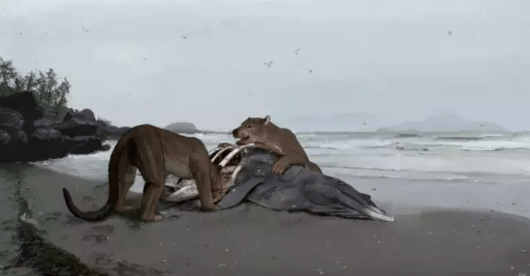An international team of scientists has identified a new species of ancient predator that was part bear and part dog and roamed Europe millions of years ago.
The predator is thought to have weighed upwards of 300 kilograms and lived in Europe 36 million years ago. According to the researchers, the creature’s teeth were a unique feature of the fossilized.
The giant animal, which researchers reckon looked part dog, and a part bear, has been named Tartarocyon. It is a nod to the large giant from Basque mythology.
The predator is believed to have weighed upwards of 300 kilograms and lived in Europe 36 million years ago. According to the researchers, the most striking feature of the fossilized remains was the creature’s teeth. In addition, unlike other amphicyonidae specimens, it has a unique fourth lower premolar.
The team discovered after studying a fossilized jaw that they believed belonged to a new type of “bear dog,” according to a report by Mirror.
Scientist Bastien Mennecart led the team from the Natural History Museum Basel.
Bastien said, “The jawbone comes from 12.8 to 12 million-year-old marine deposits that were examined in the small community of Sallespisse in the Pyrenees-Atlantiques department of south-western France.”
The scientists revealed that the fossilized jaw belongs to a group of predators that resembled “a cross between a bear and a large dog, known as ‘bear dogs.'”
“This tooth is vital for choosing species and genera. Correspondingly, the lower jaw examined likely represents a new genus. It is called Tartarocyon. This name comes from Tartaro, a large, powerful, one-eyed giant from Basque mythology,” added Bastien.

 DogExpress
DogExpress


















 in Chandigarh, India.
in Chandigarh, India. 
